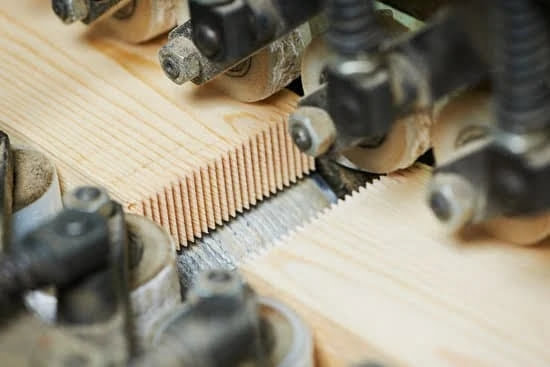Introduction to the Woodworking Bench Vise
A woodworking bench vise is an important tool used by woodworkers and carpenters to secure materials for cutting, drilling, polishing, and more. It consists of two jaws where one jaw is mobile and one is fixed. The vise has two handles that the user can use to tighten or loosen the two jaws together depending upon the type of work being done. There are several different types of vises ranging from small hand-held ones to large floor vises that are permanently mounted onto a workbench.
When choosing a vise for your woodworking needs it is best to go with one that is appropriate for the size and weight of the material you will be working with. Larger vises are better suited for heavier objects such as logs. Smaller vises, on the other hand, can be used on lighter materials such as pieces of milled lumber or plywood. Knowing what kind of project you plan on completing should help narrow down which type would best suit your needs. Additionally, you should also consider whether you will need permanent mounting capability or if a simple clamp-on version will suffice.
Benefits of Using a Woodworking Bench Vise
Using a woodworking bench vise is beneficial because it holds your projects securely in position while you work on them. It also allows you to set up intricate pieces of wood in difficult angles so that you can access any portion of the project exactly as needed. A bench vise provides far greater hold than other woodworking tools, such as clamps, which makes it ideal for delicate or intricate work. The jaws on a vise are sturdy enough to clamp down and hold even the hardest types of woods without slipping or crooking. Furthermore, a vise has adjustable screws and locking mechanisms which will not scratch your stock and can be used again and again over many different projects with repeatable precision. This precision makes sure that you achieve repeatable results every time, allowing for more accurate workmanship in less time compared to working with hand tools.
Types of Woodworking Bench Vise
One type of woodworking bench vise is a metal base vise. These vises are often made from steel, iron, or aluminum for maximum strength and durability. This type of vise can be used for a variety of tasks such as clamping materials in place while sawing or drilling, securing parts during assembly operations, and providing a solid foundation for holding heavy pieces while they are worked on.
Another type of bench vise is the screw-type vise. This design provides users with extra adjustability by having a large handle that is used to turn a threaded screw which will raise or lower the jaws to fit whatever size material needs to be clamped down. The jaws themselves are usually round on this type of vice so they can accommodate larger-diameter materials than flat jaws alone could hold.
The third common style of vice is a quick-release vise. This type has a lever mechanism that allows the jaws to be opened and closed quickly with one hand motion. These vises come in two main variations: push-button quick-release vises and crank-style vises. Both allow for fast exchange between different working materials without having to unfasten the entire setup each time something needs to be done differently.
Finally, benchtop vises are becoming increasingly popular amongst woodworkers due to their convenience and range of sizes available. Benchtop vises typically have much lower clamping pressures than traditional bench vises but provide reliable support in cramped workspaces or those with limited wall space where larger vises might not fit easily into tight corners or other carefully orchestrated workshop designs.
Best Brands of Woodworking Bench Vise
Woodworking bench vises provide the necessary grip for woodworkers undertaking challenging work in their woodshop. A wide variety of brands are available, with different price points and quality levels. Understanding the best options for your needs can help you make an informed decision and maximize your woodworking project success.
Yost: Yost vises are some of the most popular, as they offer excellent design and craftsmanship at a reasonable price. They come in a range of sizes to fit different applications, feature solid steel construction, and have quick-release levers that allow you to easily install or remove them from the benchtop when required. The compression pads (aka serrated jaws) increase clamping power without visibly marring surfaces.
IRWIN: IRWIN has been producing top-notch vise systems since 1885 and has a full line of various vises to choose from. Their impeccable craftsmanship is easily comparable to Yost’s but comes at a more expensive price tag since they use heavier-duty materials than some other competitors in their product range. Additionally, most models come standard with swivel bases for added convenience when working on intricate parts.
Wilton: Wilton’s lineup consists mainly of economical yet surprisingly functional vice designs, often referred to as the “workhorse” of vises due to their heavy-duty structure and affordable retail prices. This brand is known for its robust construction that includes deep throat openings and three machined mill-style hardened steel screws for extra clamping strength; perfect if you need a reliable yet budget-friendly vise for uneven terrain or large parts/materials.
How to Capitalize on Using a Woodworking Bench Vise
1. Read the instructions that came with your vise before using it. This will help to make sure that you understand how to use the vise correctly and safely.
2. Choose the right size bench vise for your project – a bigger vise may be needed if you plan on working with larger pieces of wood while a smaller one may be enough if you’re just planning on performing basic work.
3. Make sure that the jaws of your vise are firmly secured to their base, as this will provide better support for larger and heavier items.
4. Establish a square cut when securing objects in place by placing shims between the jaws of your bench vise and the item being clamped down.
5. If possible, adjust your setup so that any pressure applied is directed towards the center of the vise, as this helps to reduce friction-based wear and tear as well as prolonging its life expectancy.
6. Inspect your tools regularly – Before each use, you should check for any signs of damage such as cracks or splitting in any part of the vice construction as these can become an issue over time unless they are addressed immediately.
7. Clean and lubricate – Every once in a while, it’s important to apply some lubricant (such as WD-40) around the screws which can help them move more smoothly without seizing up over time from rusting or too much pressure being applied when using them excessively during your projects.
8. Secure wooden panels for increased safety – When clamping down large boards or items in place, use either wedges or securing nails underneath them to ensure that no movement occurs after clamped down; preventing injuries from loosening bits coming off throughout its lifetime usage
Conclusion
A woodworking bench vise is an essential tool for any woodworker, providing stability and precision when performing high-precision machining operations. In this blog post we have discussed various key points that customers should consider when looking for a woodworking bench vise. These topics include the type of jaw opening needed to fit your project, the types of handles and triggers available, the number of mounting holes required, and lastly, the overall construction level of quality required to meet your individual needs.
All in all, it is clear that important factors like jaw opening size and construction quality cannot be overlooked when selecting a woodworking bench vise. Along with these considerations, other aspects such as available installation options and trigger configurations may influence one’s decision making process. In conclusion, customers should always assess their own needs in order to determine the best choice for their specific projects or environment.

Hi everyone! I’m a woodworker and blogger, and this is my woodworking blog. In my blog, I share tips and tricks for woodworkers of all skill levels, as well as project ideas that you can try yourself.





